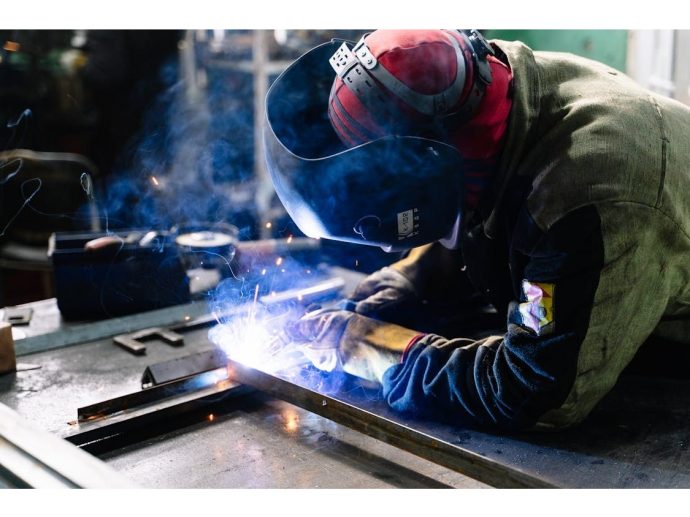Categories more
- Adventures (16)
- Arts / Collectables (14)
- Automotive (36)
- Aviation (10)
- Bath, Body, & Health (73)
- Children (6)
- Cigars / Spirits (30)
- Cuisine (16)
- Design/Architecture (17)
- Electronics (12)
- Entertainment (4)
- Event Planning (3)
- Fashion (43)
- Finance (8)
- Gifts / Misc (6)
- Home Decor (44)
- Jewelry (39)
- Pets (3)
- Philanthropy (1)
- Real Estate (11)
- Services (21)
- Sports / Golf (14)
- Vacation / Travel (60)
- Watches / Pens (14)
- Wines / Vines (24)
- Yachting / Boating (15)
Understanding Different Types of Commercial Welding Techniques and Their Applications
Published
08/21/2024Have you ever wondered how massive skyscrapers, sturdy bridges, and even the frame of your car are built to last? At the heart of these feats of engineering is commercial welding, a blend of art and science for constructing and maintaining these structures. Welding not only ensures that metal frameworks are secure, but it also impacts the durability and safety of virtually everything made of metal. Let’s explore the different techniques of commercial welding and where they are most commonly applied.
What are the Kinds of Commercial Welding Techniques?
Commercial welding services are integral to multiple industries, offering various techniques using different materials and for varied applications. Let's take a look at some of the most common welding techniques that you can generally find in commercial settings.
1. Shielded Metal Arc Welding (Stick Welding)
Also known as stick welding, Shielded Metal Arc Welding is one of the oldest and most versatile welding methods. In this technique, welders use a consumable electrode coated in a chemical flux that provides a shielded gas environment to protect the weld area from oxidation and contamination.
SMAW is widely used in construction projects for its simplicity and the ability to weld thick materials efficiently. This technique is perfect for constructing bridges, repairing heavy equipment, and building industrial frameworks.
2. Gas Metal Arc Welding (GMAW/MIG)
Gas Metal Arc Welding, commonly known as MIG welding (Metal Inert Gas), uses a wire-feeding gun that feeds wire at an adjustable speed and sprays an argon-based shielding gas over the weld puddle to keep it clean from atmospheric elements.
This method is favored in manufacturing processes because it produces cleaner welds than SMAW, is easy to learn, and can be automated or semi-automated. MIG welding is generally used in automotive manufacturing, robotics, and any application requiring high production volumes and clean, efficient welds.
3. Gas Tungsten Arc Welding (GTAW/TIG)
TIG welding (Tungsten Inert Gas) is known for its precision and the high quality of its welds. Unlike MIG welding, TIG uses a non-consumable tungsten electrode to produce the weld and requires the operator to hold a separate filler material.
Common applications include aerospace welding, bicycle manufacturing, and projects where aesthetics are important, such as sculptures or high-end custom motorcycles.
4. Flux-Cored Arc Welding (FCAW)
This technique is similar to MIG welding but uses a special tubular wire filled with flux, which can be used with or without a shielding gas. Because of its flexibility, high welding speed, and ability to weld outdoors (even in windy conditions), FCAW is often chosen for construction projects, shipbuilding, and heavy equipment repair.
It fills a niche where high deposition rates and efficiency are needed but where the aesthetics of the weld are not the primary concern.
5. Submerged Arc Welding (SAW)
Submerged Arc Welding is a highly efficient automated welding method in which the weld and arc zone are submerged under a blanket of granular fusible flux. This process yields a clean, slag-free weld with negligible spatter and absolutely no visible arc light.
It's used most commonly in industrial settings where extended straight welds are needed such as pipelines or in welding components of big steel and machinery structures.
6. Electroslag Welding (ESW)
Electroslag Welding is a highly productive, single-pass welding process designed for thick materials (usually 1 inch or thicker). This method uses a consumable guide tube and is often used to join large plates in vertical positions, such as in the fabrication of massive structures or shipbuilding.
Although it's less common than other welding techniques, ESW is invaluable for specific heavy-duty applications due to its deep weld penetration and high productivity rate.
Applications of Commercial Welding Techniques
The applications of welding are as varied as the techniques themselves. From constructing industrial high-rises and residential homes to repairing ships and manufacturing automobiles, welding is everywhere.
For instance, in the automotive industry, manufacturers might choose MIG welding for its speed and efficiency in production lines. In contrast, a custom motorcycle workshop might prefer TIG welding for its precision and the clean look it provides, which is essential in custom builds.
Similarly, in construction, stick welding's portability and versatility make it ideal for on-site repairs and construction in remote areas. Meanwhile, submerged arc welding might be used in a factory setting where long welds are common and speed and weld appearance are important.
Wrapping Up
If you’re still curious about the impact of welding on our everyday lives, look around! From the car you drive to the building you work in, commercial welding services play a significant role in making our modern world safe and functional. As we continue to innovate and build, the art of welding remains at the heart of our developmental success.















